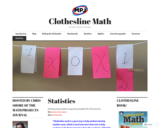
Premade number tents to use clothesline math with five number summary and standard deviation.
- Subject:
- Mathematics
- Material Type:
- Teaching/Learning Strategy
- Provider:
- Clothesline Math
- Author:
- Chris Shore
- Date Added:
- 12/01/2022
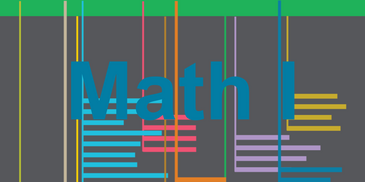
This collection contains highly recommended Secondary Mathematics I lessons, activities, and other resources from the eMedia library.

Premade number tents to use clothesline math with five number summary and standard deviation.

This task addresses many standards regarding the description and analysis of bivariate quantitative data, including regression and correlation.
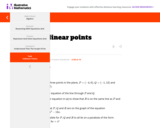
This task leads students through a series of problems which illustrate a crucial interplay between algebra (e.g., being solutions to equations) and geometry (e.g., being points on a curve).

This task gives students an opportunity to work with exponential functions in a real world context involving continuously compounded interest. They will study how the base of the exponential function impacts its growth rate and use logarithms to solve exponential equations.
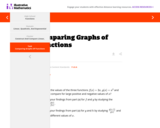
The goal of this task is to use appropriate tools to compare graphs of several functions. In addition, students are asked to study the structure of the different expressions to explain why these functions grow as they do.

TuvaLabs Data Stories provide resources for teachers to engage students in rich discourse about an interesting topic and then allows students to come to conclusions using mathematical reasoning and tools.
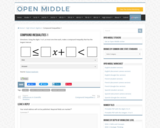
Open Middle provides math problems that have a closed beginning, a closed end, and an open middle. This means that there are multiple ways to approach and ultimately solve the problems. Open middle problems generally require a higher Depth of Knowledge than most problems that assess procedural and conceptual understanding.
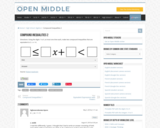
Open Middle provides math problems that have a closed beginning, a closed end, and an open middle. This means that there are multiple ways to approach and ultimately solve the problems. Open middle problems generally require a higher Depth of Knowledge than most problems that assess procedural and conceptual understanding.

This task provides an approximation, and definition, of e, in the context of more and more frequent compounding of interest in a bank account. This task is preliminary to F-LE Compounding Interest with a 5% Interest Rate which further develops the relationship between e and compound interest.

This task develops reasoning behind the general formula for balances under continuously compounded interest. While this task itself specifically addresses the standard (F-BF), building functions from a context, a auxiliary purpose is to introduce and motivate the number e, which plays a significant role in the (F-LE) domain of tasks.
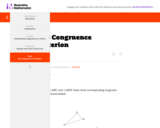
The goal of this task is to establish the SSS congruence criterion using rigid motions.
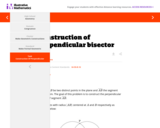
The construction of the perpendicular bisector of a line segment is one of the most common in plane geometry and it is undertaken here.

This site provides both a video and step-by-step directions on how to complete a variety of constructions.
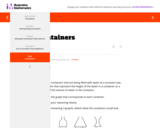
The purpose of the task is to help students think about how two quantities vary together in a context where the rate of change is not given explicitly but is derived from the context.
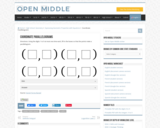
Open Middle provides math problems that have a closed beginning, a closed end, and an open middle. This means that there are multiple ways to approach and ultimately solve the problems. Open middle problems generally require a higher Depth of Knowledge than most problems that assess procedural and conceptual understanding.

No one wants to spend more money than necessary on heating and air conditioning. But, everyone wants to be comfortable and cozy while at home. The development of programmable thermostats was an initial effort to assist in reducing energy costs. With a programmable thermostat, you can manually preset a schedule of temperature increases and decreases for weekdays and weekends, and day and night periods, to keep your home cool or warm when needed, but save energy when not needed. Any adjustment to the schedule requires a manual change at each thermostat.
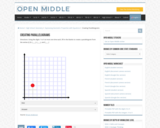
Open Middle provides math problems that have a closed beginning, a closed end, and an open middle. This means that there are multiple ways to approach and ultimately solve the problems. Open middle problems generally require a higher Depth of Knowledge than most problems that assess procedural and conceptual understanding.
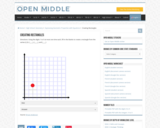
Open Middle provides math problems that have a closed beginning, a closed end, and an open middle. This means that there are multiple ways to approach and ultimately solve the problems. Open middle problems generally require a higher Depth of Knowledge than most problems that assess procedural and conceptual understanding.
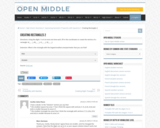
Open Middle provides math problems that have a closed beginning, a closed end, and an open middle. This means that there are multiple ways to approach and ultimately solve the problems. Open middle problems generally require a higher Depth of Knowledge than most problems that assess procedural and conceptual understanding.
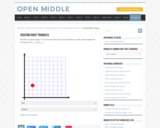
Open Middle provides math problems that have a closed beginning, a closed end, and an open middle. This means that there are multiple ways to approach and ultimately solve the problems. Open middle problems generally require a higher Depth of Knowledge than most problems that assess procedural and conceptual understanding.